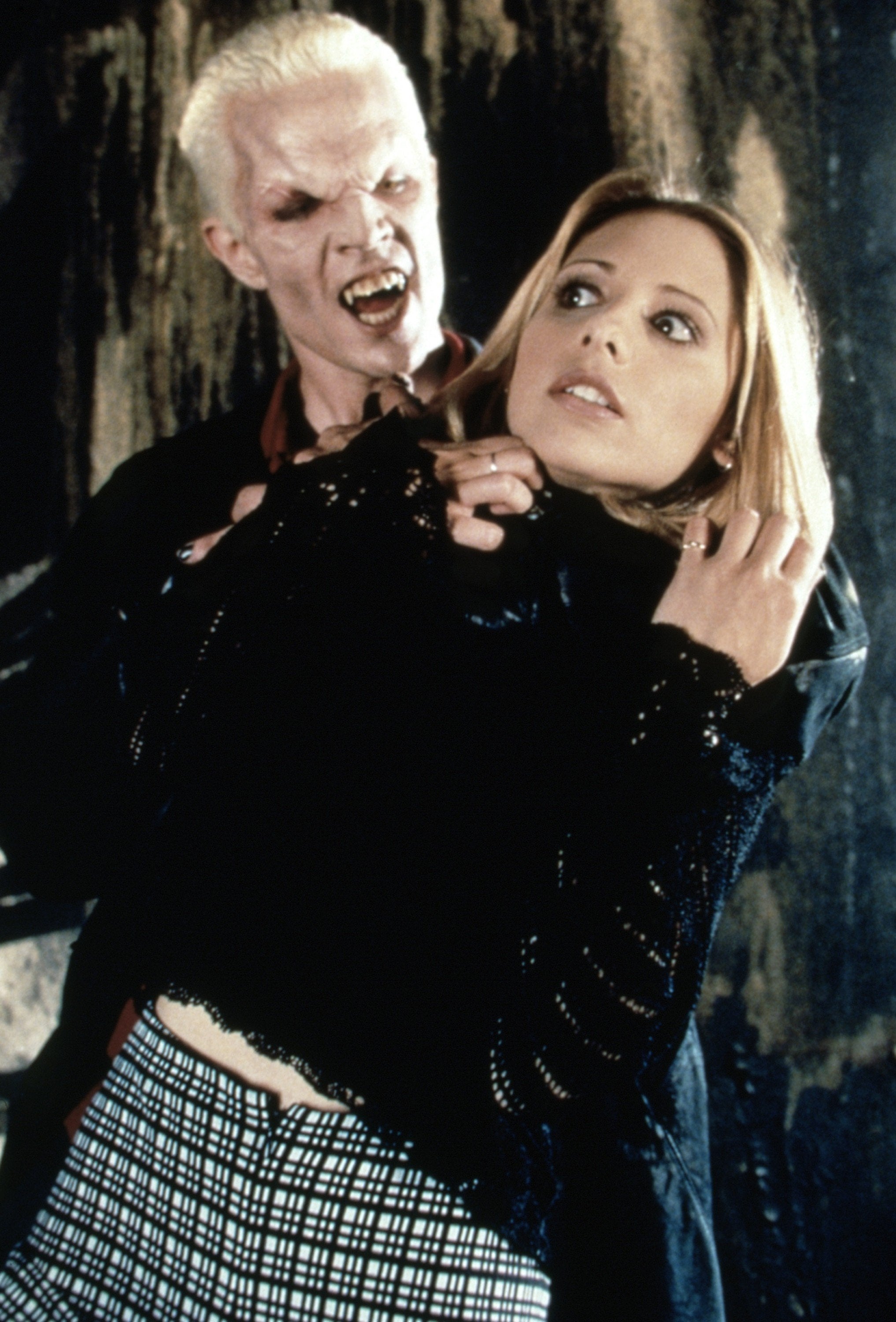Remember when Buffy the Vampire Slayer died? It was back in May 2001 that Sarah Michelle Gellar’s teenage demon-slayer sacrificed her life in Buffy’s fifth season finale. By October, she was back – her grief-stricken friends having, through magic incantation, wrenched her from heaven and back down to the sterile promontory of life. In Buffy, death is often far from permanent.
There’s some fittingness, then, in the reports that Buffy is itself being revived – not by witchcraft, but by Hulu. The series had, until now, been enjoying a pretty unique afterlife. Creatively, its reputation has only grown – the series’ innovations in form, structure and tone have altered both the medium of television, and pop culture at large. But its legacy has been complicated by unhappy tales of its making: grim allegations of on-set wrongdoing levied against creator Joss Whedon. A revival series would have to navigate a hell of a lot of baggage, on top of a creative landscape that has been radically terraformed by the age of streaming. It is, in other words, almost doomed to disappoint. Despite this, though, it’s hard not to be excited: television is crying out for another show like Buffy.
Gellar’s involvement in the new series will be crucial: it was her significant star power upon which the success of the original hinged. If nothing else, Buffy’s return gives her a chance at a long-overdue career renaissance. But just as important is who’s in charge of the new series: sisters Nora and Lilla Zuckerman. The Zuckermans worked under Whedon on his now-mostly-forgotten Marvel series Agents of SHIELD, and – more significantly – served as showrunners of the Columbo-inspired Natasha Lyonne detective series Poker Face (set to return for season two later this year).
What made Poker Face such a breath of fresh air, televisually speaking, was its fidelity to an older, near-extinct mode of TV – one comprising episodic, largely self-contained stories. Buffy was almost peerless in its use of this semi-serialised “monster of the week” format; the ability to tell self-contained stories allowed it the freedom to take risks, and embrace high-concept storytelling. Many of the series’ most popular episodes – season four’s “Hush”, told without spoken dialogue, or season six’s musical episode “Once More, With Feeling” – were only possible because of the show’s storytelling structure. All the while, Buffy was also elegant in its crafting of bigger season-long arcs; its fusion of these two structures was both groundbreaking and extremely difficult to pull off. Recent shows attempting to mimic Buffy’s appeal, such as the Netflix-produced Sabrina the Teenage Witch, have tripped up on this basic structural level – prioritising the sort of tiresome “10-hour-film” serialisation that’s de rigueur in the streaming era.
When it comes to baggage, it’s not just Whedon who’s the problem – though the disgraced writer’s spectre will inevitably hang over whatever the new Buffy becomes. Nicholas Brendan, who played Xander for the entirety of the show, has faced a slew of legal issues in the years since the series ended, including convictions for domestic violence. He is surely not going to return, but the optics of leaving him out creates potential issues when it comes to bringing back other castmembers – most significantly Alyson Hannigan’s Willow (the third member of the core friend-group triad). That’s not to say they won’t, of course, but it just creates more questions on the press tour; more gossip on social media; another point of controversy that must be stepped around or addressed.
Of course, Buffy has already survived one reboot – more than survived, in fact. In its original incarnation – a 1992 theatrical movie scripted by Whedon – Buffy the Vampire Slayer was pretty terrible: broad, obnoxious, above all not funny. Other than a few wispy strands of narrative continuity, the TV series started from scratch, opting for an entirely different tone, and reshaping Buffy into a far more interesting lead. A new revival will face a more delicate task – updating its predecessor without changing what worked.

Fans seem to be cautiously optimistic about Buffy’s return – or, at the very least, interested. (It’s a vastly different reaction than, say, the one to greet the recent Frasier revival, which was accurately written off as doomed from the moment of conception.) It may be nostalgia that makes the idea seem appealing – not just nostalgia for the specific world of Buffy, but nostalgia for an entire way of making television, an artform that has, in the intervening years, mutated beyond recognition. And hey – sometimes raising the dead works out OK. Just don’t put away the stakes just yet.




